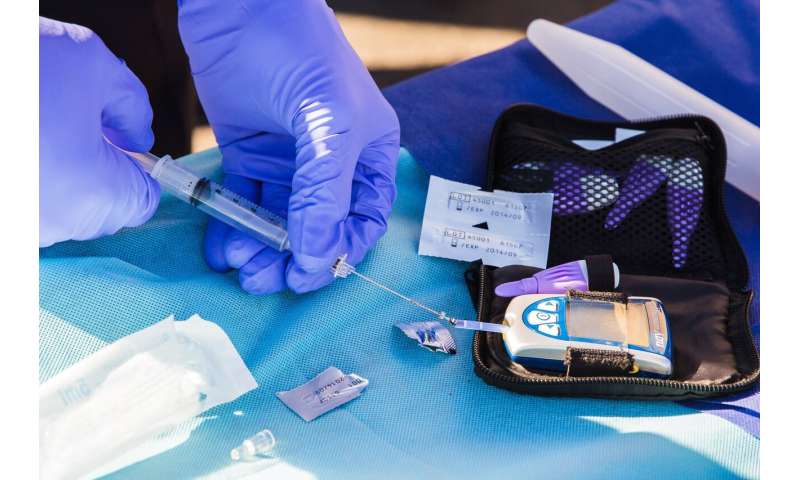
Diabetes is currently treated using incretin hormones to reduce the risk of cardiovascular disease and other medical issues that the illness can trigger. Now researchers from Lund University in Sweden have noted new links between these hormones and arteriosclerosis, and believe their discovery could be significant for treatment of diabetes in the future. The study is published in Diabetes Care.
When we eat, the incretin hormones GIP and GLP-1 are secreted by the intestine. These stimulate insulin secretion in the pancreas and contribute to the reduction in blood sugar to normal levels following a meal—known as the incretin effect.
This incretin effect is inhibited in those with type-2 diabetes, leading to hampered insulin production. This is why these hormones are currently therapeutic targets for treating insulin levels in diabetes patients.
In the current study, the researchers measured hormone levels in the blood.
“We saw that high levels of GIP were linked to a significantly higher risk of early signs of arteriosclerosis, while high levels of GLP-1 were instead linked to a lower risk. This link maintained statistical significance even after it was corrected for known risk factors,” says Martin Magnusson, adjunct professor at Lund University and senior consultant in cardiology at Skåne University Hospital, as well as Clinical Fellow in diabetes at the Wallenberg Center for Molecular Medicine at Lund University.
Researchers used data from the major Malmö Diet Cancer population study involving 3,342 participants, 59 percent of whom were women and whose average age was 72. Ten percent of the participants had diabetes.
Martin Magnusson’s research team are also behind a study published in Diabetologia in January 2020 that showed that high levels of GIP are linked to a greater risk of cardiovascular mortality and total mortality.
The current study is the first in which researchers take measurements from people—and across a large population—to investigate the link between the levels of GIP and GLP-1 in the blood and measurements of early arteriosclerosis.
“The findings in this new study indicate that there may be a link between raised GIP levels in the blood and a risk of arteriosclerosis. As we did not have many diabetic participants in the study, we do not yet know how GIP levels affect the arteriosclerosis process in a purely diabetic population and should therefore treat the results as a basis for generating hypotheses,” says Amra Jujic, postdoc at Lund University and the first author of the study.
Martin Magnusson considers the results to be in line with what earlier randomized clinical pharmaceutical studies have also shown. In treatments using GLP-1 agonists, the risk of cardiovascular morbidity fell while studies that indirectly raise GIP and GLP-1 through medicinal treatment using DPP4 inhibitors were not able to demonstrate such positive effects.
The researchers’ hypothesis is that the positive effects of GLP-1 are counteracted by the potentially negative effects of GIP, and that this can explain the lack of cardiovascular-shielding effects in DPP4 inhibitors. Magnusson emphasizes that randomizing clinical studies of DPP4 inhibitors have shown that this medication is not linked to any negative cardiovascular effects and is therefore entirely safe for patients with diabetes to take.
“Our findings should absolutely not be used as an argument for diabetes patients to alter their current treatment. However, as many diabetes patients may likely be treated using a new group of medications in the future that directly stimulate both GLP-1 and the GIP receptor, there is major clinical interest in gaining clarity on what lies behind our epidemiological findings,” explains Magnusson.
Source: Read Full Article


